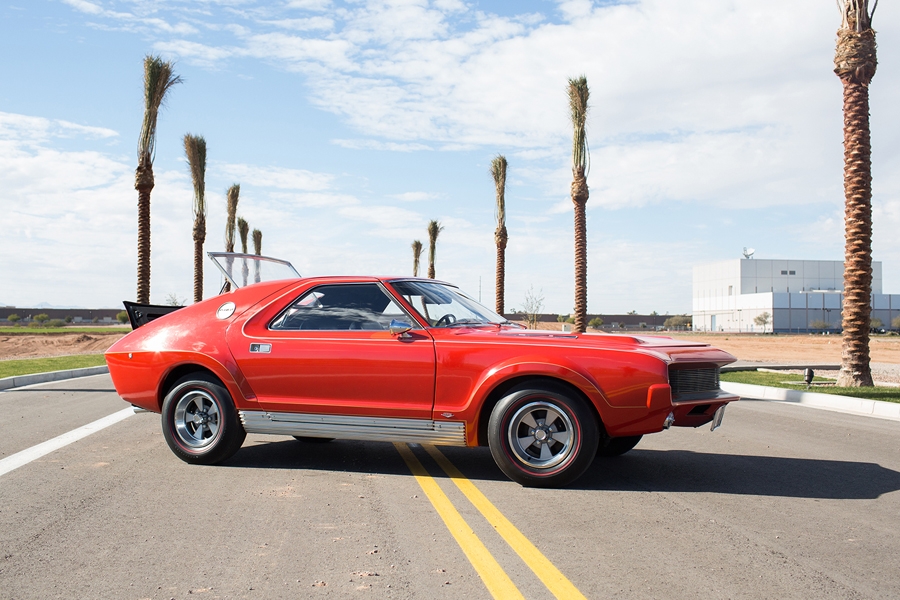Eager to shed its stodgy reputation during the 1960s, American Motors launched a daring assault on the lucrative youth market with a series of prototypes. Developed at AMC’s advanced styling studios in October 1965, the first AMX prototype — short for American Motors experimental — was developed under Charles Mashigan, a leading contributor to Ford’s original Thunderbird and Chrysler’s Turbine.
AMC management was suitably encouraged to approve further development, enlisting outside contractors Smith Inland of Ionia, MI, to build a small group of the distinctive fiberglass bodies differing in fine details from the original AMX show car.
While the number of fiberglass AMXs built remains unclear today, it is believed that just two were ultimately created. These fiberglass-bodied prototypes were fitted with powertrains and tested at the AMC proving grounds. This fascinating vehicle is one of those cars.
Once the AMX progressed to the assembly line in 1967 for its highly anticipated launch for 1968, the fiberglass prototypes — which were never intended for road use — were slated for destruction. One is reported to have been unceremoniously burned, and the other, the car offered here, was spared, thanks to Domenick Jiardine Jr., an assembly-line worker at American Motors’ Kenosha Lake Front Plant in 1971.
As the sole surviving fiberglass AMX prototype, it stands as a unique and formative specimen of one of the most exciting performance cars ever designed and built in America during the 1960s.

